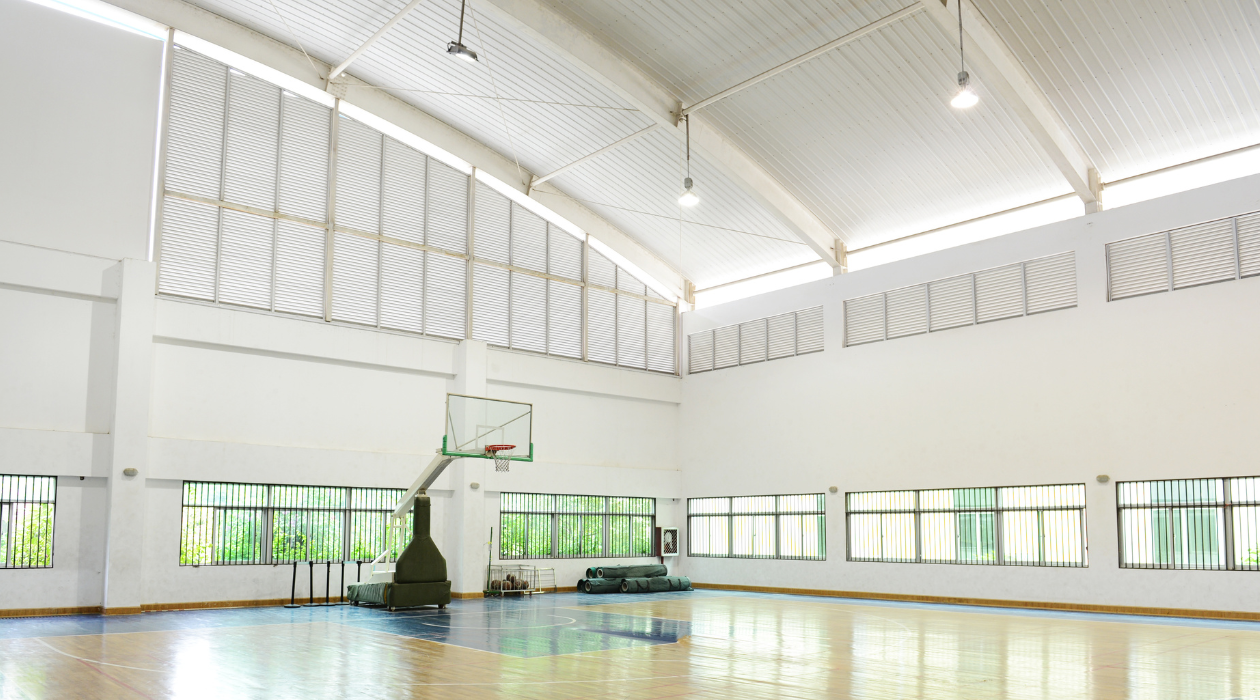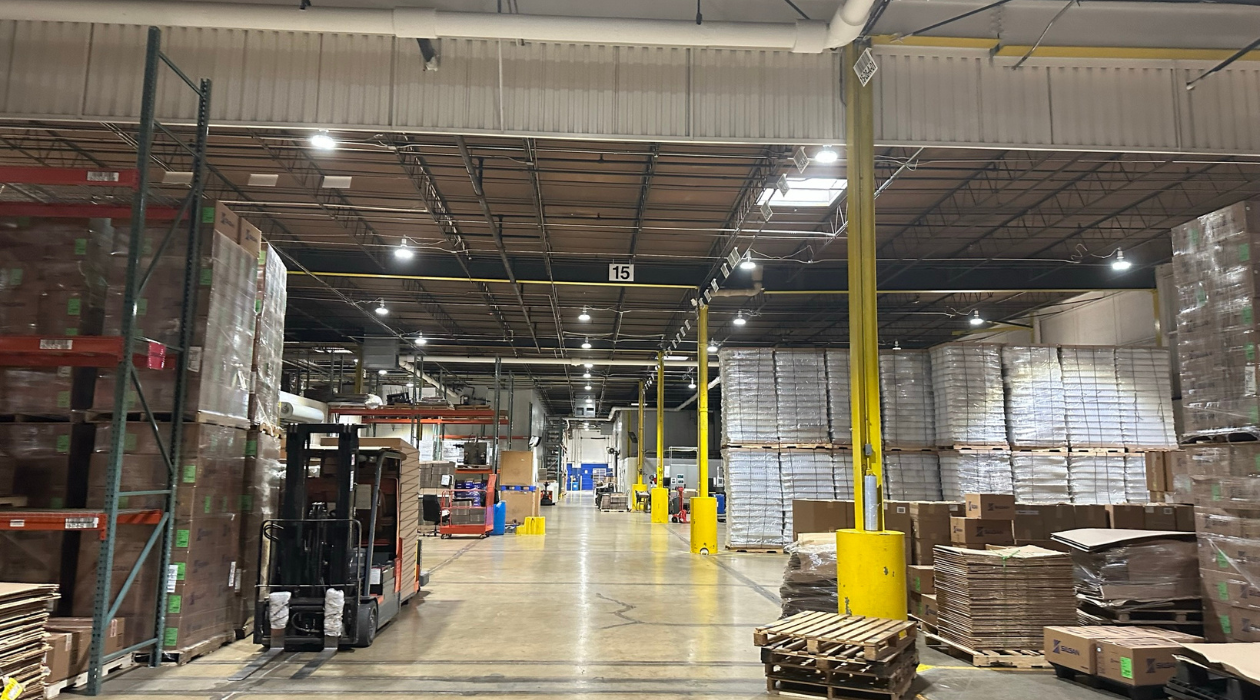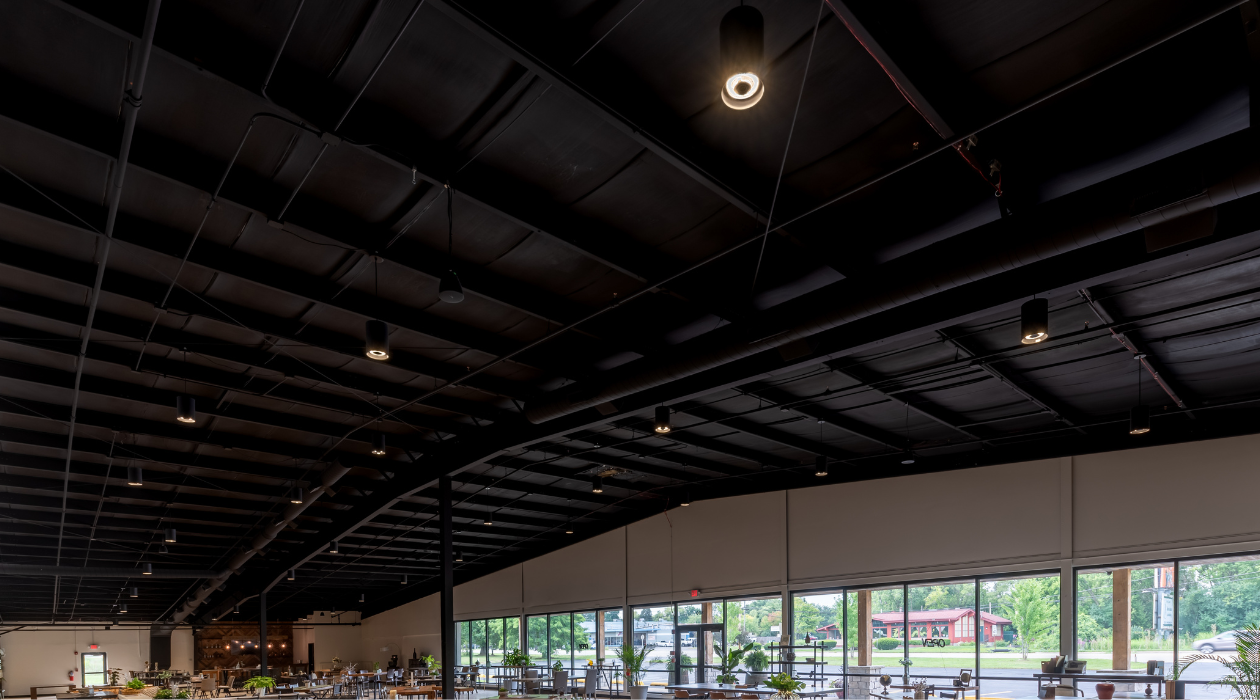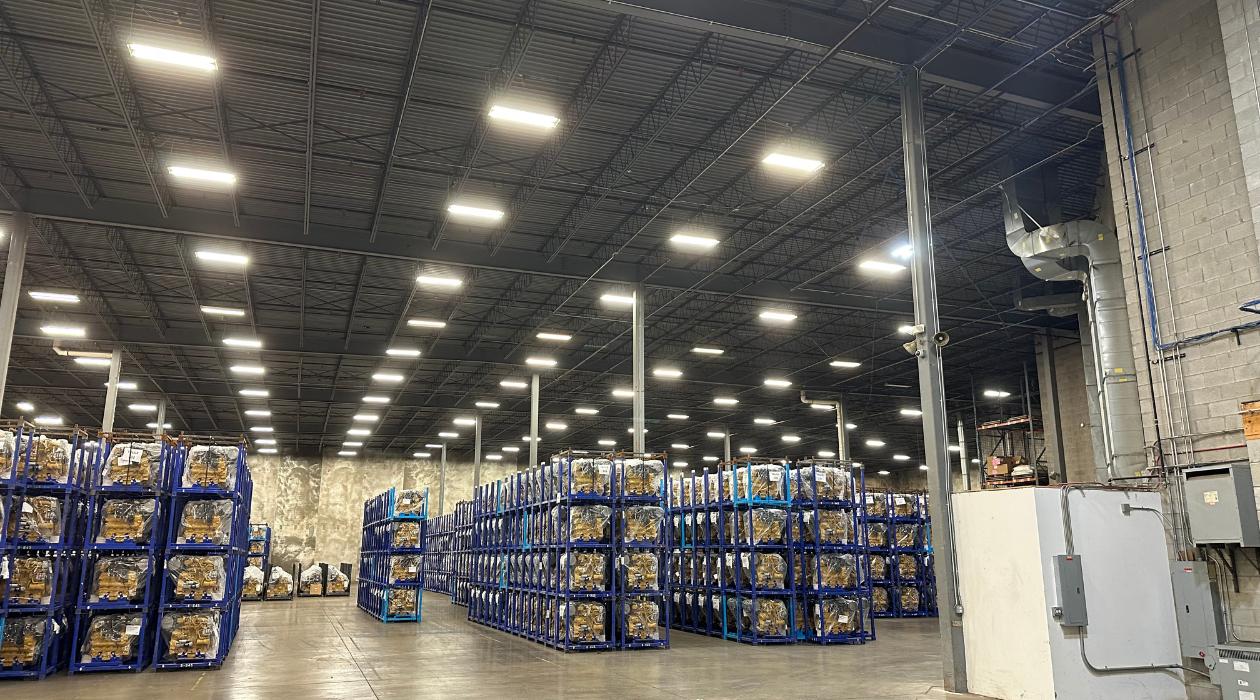100. Lumen Maintenance - What is it and Why is it Important?
By Jim Luby • May 29, 2024
Lumen maintenance is a critical concept in lighting and refers to the ability of a light source, such as a LED lamp or LED fixture (or luminaire), to maintain its initial light output over time. In essence, it helps us understand LED longevity or LED lifespan. As lighting technology continues to advance, understanding lumen maintenance becomes increasingly important for ensuring energy efficiency, cost-effectiveness, and optimal illumination. So, if you're wondering, "How long do light bulbs last?" you have come to the right place. This post will explore lumen maintenance, why it matters, the factors influencing it, and its implications for your business. Through a comprehensive analysis, we will delve into the technical aspects, industry standards, and practical applications of lumen maintenance in modern lighting solutions for commercial lighting and industrial lighting applications.
What is Lumen Maintenance?
You might ask, "how long do LED lights last?" Well, lumen maintenance refers to the ability of a light source to retain its initial light output over time. Whether your lighting is an LED strip light or an LED street light, all light sources have a unique lifespan. When a light source is installed, it emits a certain amount of light, measured in lumens. Over time, the light output decreases due to various factors, such as aging of the light source, environmental conditions, and operational factors. Lumen maintenance is typically expressed as a percentage of the initial light output after a specified period.
For instance, consider a scenario where a lighting fixture in a commercial building initially emits 1,000 lumens and maintains 900 lumens after 50,000 hours of operation. This means the fixture has a lumen maintenance of 90% (often expressed as L90). To put this into perspective, if the building operates for 10 hours a day, this fixture would maintain its brightness for over 13 years (10 hours per day x 365 days per year equates to approximately 13 years before light degradation falls to 90% of initial light output). This measure not only helps to quantify the LED depreciation of light output but also provides a basis for comparing the performance of different lighting products.

Importance of Lumen Maintenance
Why is knowing the LED longevity of your lights so important? Well, for many reasons. Understanding lumen maintenance allows you to compare the quality of a light source, and output over a period of time.
1. Energy Efficiency and Cost Savings
One of the primary reasons lumen maintenance is important is its impact on energy efficiency and cost savings. Lighting systems that maintain their lumen output over a longer period require fewer replacements and consume less energy to achieve the desired light levels. Poor lumen maintenance can lead to increased energy consumption as more LED light fixtures may be needed to compensate for the diminished output. This not only raises electricity costs but also increases maintenance expenses due to more frequent replacements and servicing.
2. Lighting Quality and Safety
Maintaining consistent lighting quality is not just a technical requirement but a crucial factor in creating safety, productivity, and comfort. Quality LED bulbs and products with appropriate lumen maintenance can enhance productivity, boost employee satisfaction, prevent accidents in the workplace, and improve safety in manufacturing plants. Your commitment to sufficient lighting can also create a safer environment and enhance the overall ambiance in public spaces.
Consistent lumen maintenance ensures that lighting systems provide stable and adequate illumination throughout their operational life. This stability is vital for tasks requiring precise lighting, such as in medical facilities, manufacturing plants, and educational institutions.
3. Compliance with Standards and Regulations
Many industries, such as healthcare, manufacturing, and retail, are subject to strict lighting standards and regulations that specify minimum illumination levels for safety and operational efficiency. These standards often consider lumen maintenance to be a critical factor in ensuring long-term compliance. For instance, in a hospital setting, consistent lumen maintenance is crucial for ensuring optimal lighting conditions in operating rooms and patient wards. Failure to meet these standards can result in penalties, legal liabilities, and reputational damage.
For example, the Illuminating Engineering Society (IES) and other regulatory bodies have established guidelines for acceptable lumen maintenance levels for different lighting applications. Adhering to these standards helps organizations meet legal requirements and maintain high lighting quality standards.

Factors Affecting Lumen Maintenance
Several factors influence the lumen maintenance of lighting systems, including the type of light source, environmental conditions, and operational practices. Understanding these factors is essential for selecting and maintaining your lighting for optimal performance and longevity.
1. Type of Light Source
Different types of light sources exhibit varying levels of lumen maintenance. Traditional incandescent bulbs, for instance, tend to have shorter lifespans and poorer lumen maintenance than modern light sources like LEDs (Light-Emitting Diodes) and CFLs (Compact Fluorescent Lamps).
- Incandescent Bulbs: Incandescent bulbs typically have a lower lifespan and significant lumen depreciation. They lose a substantial portion of their initial lumen output relatively quickly, leading to more frequent replacements.
- Fluorescent Lamps: Fluorescent lamps offer better lumen maintenance than incandescent bulbs but still experience notable depreciation over time. Factors such as temperature fluctuations and on-off cycling can affect their performance.
- LEDs: LEDs are known for their excellent lumen maintenance characteristics. They have longer lifespans and maintain a higher percentage of their initial lumen output over time, making them a popular choice for energy-efficient and long-lasting lighting solutions.
2. Environmental Conditions
The environment in which a lighting system operates plays a significant role in its lumen maintenance. Factors such as temperature, humidity, and exposure to dust or other contaminants can impact the longevity and performance of light sources.
- Temperature: High temperatures can accelerate the degradation of lighting components, leading to faster lumen depreciation. Conversely, extremely low temperatures can also affect the performance of certain light sources.
- Humidity: Excessive humidity can cause corrosion and other damage to lighting fixtures, affecting their ability to maintain lumen output.
- Contaminants: Dust, dirt, and other airborne particles can accumulate on lighting fixtures, reducing their efficiency and contributing to lumen depreciation. Regular cleaning and maintenance are essential to mitigate these effects.
3. Operational Practices
How lighting systems are operated and maintained also influences their lumen maintenance. Factors such as usage patterns, electrical quality, and maintenance routines can all impact the longevity and performance of light sources.
- Usage Patterns: Frequent on-off cycling can stress lighting components and lead to faster degradation. Continuous operation, on the other hand, may reduce the impact of cycling but can still contribute to wear and tear over time.
- Electrical Quality: Fluctuations in electrical supply, such as voltage spikes or surges, can damage lighting components and reduce their ability to maintain lumen output. Ensuring a stable and consistent electrical supply is crucial for optimal performance.
- Maintenance Routines: Regular maintenance, including cleaning, inspections, and timely replacements of aging components, is necessary for preserving lumen maintenance. Neglecting maintenance can accelerate lumen depreciation and shorten the lifespan of lighting systems.

Measuring Lumen Maintenance
Accurate measurement of lumen maintenance is essential for assessing the performance of lighting systems and making informed decisions about their use and maintenance. Several methods and standards are readily available to measure lumen maintenance, each with its advantages and limitations, ensuring that you have the tools you need to maintain optimal lighting performance.
1. LM-80 Standard
The LM-80 standard, developed by the Illuminating Engineering Society (IES), is one of the most widely used methods for measuring the lumen maintenance of LED light sources. LM-80 testing involves subjecting LED products to controlled conditions and measuring their lumen output over a specified period.
LM-80 tests are typically conducted at different temperatures to simulate real-world operating conditions. The results provide valuable data on the expected lumen maintenance of LED products, helping manufacturers and consumers make informed choices.
2. L70 and L90 Metrics
Lumen maintenance is often expressed in terms of L70 and L90 metrics, which indicate the percentage of initial lumen output remaining after a specified period. For example:
- L70: The time it takes for a light source to reach 70% of its initial lumen output. This metric is commonly used to indicate the useful life of LED products.
- L90: The time it takes for a light source to reach 90% of its initial lumen output. This metric is used for applications where higher lumen maintenance is required.
These metrics provide a clear and standardized way to compare the performance of different lighting products and determine their suitability for specific applications.
3. Real-World Testing
In addition to standardized laboratory tests, real-world testing is essential for assessing lumen maintenance under actual operating conditions. Real-world testing involves installing lighting systems in their intended environments and monitoring their performance over time. This approach provides valuable insights into how environmental factors, usage patterns, and maintenance practices affect lumen maintenance in practical applications.

Implications for Different Sectors
Lumen maintenance has significant implications for various sectors. It influences lighting system selection, design, and maintenance to achieve optimal performance and cost efficiency.
1. Residential Lighting
Lumen maintenance is important for consistent lighting quality and minimizing maintenance costs in residential settings. Homeowners often seek lighting solutions that offer long lifespans and stable performance to reduce the frequency of replacements and associated expenses.
LED lighting has become increasingly popular in residential applications due to its excellent lumen maintenance and energy efficiency. Homeowners can enjoy reliable and cost-effective lighting for years by choosing high-quality LED products.
2. Commercial and Industrial Lighting
Commercial and industrial facilities require robust lighting solutions that withstand demanding operating conditions and maintain high performance over time. Poor lumen maintenance in these settings can lead to increased operational costs, safety hazards, and reduced productivity.
For example, warehouses and manufacturing plants rely on consistent illumination for safe and efficient operations. Lumen maintenance is crucial so that the lighting systems provide adequate illumination throughout their operational life, reducing the need for frequent replacements and minimizing downtime.
3. Public and Outdoor Lighting
Public and outdoor lighting, such as streetlights and parking lot lighting, is vital for safety and security in public spaces. Inadequate lighting can lead to accidents, crime, and a diminished sense of safety.
Lumen maintenance is essential for maintaining consistent and reliable illumination in outdoor environments. Lighting systems that offer high lumen maintenance reduce the need for frequent replacements and ensure that public spaces remain well-lit and secure.
4. Specialty Lighting
Certain applications, such as healthcare facilities, laboratories, and art galleries, have specific lighting requirements that demand high levels of lumen maintenance. In these settings, maintaining consistent lighting quality is crucial for achieving the desired outcomes and ensuring the well-being of occupants.
Proper lighting is needed for accurate diagnosis and treatment in healthcare facilities. Poor lumen maintenance of lighting systems can compromise the quality of care and patient safety. Similarly, in art galleries, maintaining the correct lighting conditions is vital for preserving the integrity of artworks and enhancing the visitor experience.
Closing Thoughts
Lumen maintenance is fundamental to lighting performance, especially as it relates to commercial and industrial LED lighting. The longevity of a light impacts energy efficiency, cost savings, safety, and overall lighting quality. Understanding the factors that influence lumen maintenance and the methods for measuring it are important when selecting and maintaining lighting systems that offer optimal performance and longevity.
As lighting technology continues to evolve, advancements in materials, design, and testing methods will likely improve lumen maintenance and enhance the benefits of modern lighting. By prioritizing lumen maintenance and LED longevity, individuals and organizations can achieve more reliable, efficient, and cost-effective lighting that meets their needs and contributes to a sustainable future.
Lumen maintenance is an important consideration when selecting LED lighting for commercial and industrial applications. OEO Energy Solutions is ready to assist and make sure you select the right light for your business. We evaluate all products to ensure quality light output, longevity, efficacy, and maximum energy savings over the lifecycle of your LED. If you have questions about your LED lighting needs, please contact OEO at (800) 553-2112 or email [email protected].
